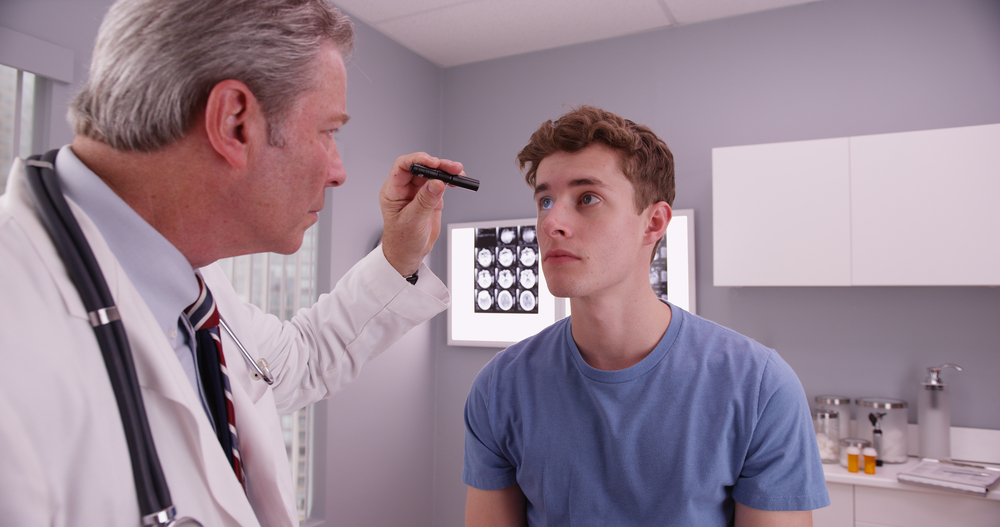
Common eye injuries in sports can range from minor issues such as eye strain to more severe conditions like detached retinas or even blindness. Understanding the types of eye injuries that can occur and taking preventive measures is crucial for maintaining good eye health.
Common Eye Injuries in Sports
Sports-related eye injuries can occur in a variety of ways. One common injury is corneal abrasion, which is a scratch on the surface of the eye. This can happen when an object, such as a ball or a finger, comes into contact with the eye at high speed. Another common injury is a black eye, which results from a direct impact to the eye socket. This can cause swelling, bruising, and pain around the eye area.
More severe eye injuries include hyphema, a condition where blood collects in the front of the eye, and orbital fractures, which are breaks in the bones surrounding the eye. These injuries can have long-term consequences if not treated promptly and properly. It is essential to recognize the signs of these injuries and seek immediate medical attention to prevent further damage and complications.
Recognizing and Treating Common Eye Injuries in Sports
Prompt recognition and treatment of common eye injuries in sports are vital for a successful recovery. If you experience vision changes, severe pain, double vision, or bleeding in the eye after a sports-related incident, it is crucial to seek medical help immediately. Delaying treatment can lead to irreversible damage or complications.
For minor injuries like corneal abrasions, your doctor may prescribe antibiotic eye drops and advise you to avoid rubbing your eyes. Applying a cold compress can help reduce swelling and alleviate discomfort. In more severe cases, such as hyphema or orbital fractures, surgery may be necessary to repair the damage. It is essential to follow your doctor's instructions and attend all follow-up appointments to ensure proper healing.
Preventive Measures for Common Eye Injuries in Sports
Prevention is always better than cure, and this holds true for common eye injuries in sports. Here are some preventive measures you can take to protect your eyes while participating in sports:
- Wear protective eyewear: Invest in sports-specific goggles or helmets with attached face shields to protect your eyes from direct impacts. Regular eyeglasses or sunglasses may not provide sufficient protection.
- Use proper technique: Learn and practice correct techniques for your sport to minimize the risk of eye injuries. This includes avoiding finger contact with the eyes, using appropriate eye-hand coordination, and being mindful of your surroundings.
- Maintain good eye hygiene: Keep your eyes clean and free from debris by washing them regularly. Avoid touching your eyes with dirty hands, as this can introduce bacteria and increase the risk of infections.
- Stay aware of your surroundings: Be aware of other players, objects, and potential hazards in your sports environment. By staying vigilant, you can anticipate and avoid situations that may lead to eye injuries.
By incorporating these preventive measures into your sports routine, you can significantly reduce the likelihood of common eye injuries.
Safety Equipment for Eye Protection in Sports
Choosing the right safety equipment is crucial for optimal eye protection in sports. Here are some essential items to consider:
- Sports goggles: Look for goggles specifically designed for your sport. They should fit snugly, provide adequate coverage, and have shatterproof lenses to withstand impact.
- Face shields: For sports with a higher risk of facial injuries, such as hockey or lacrosse, consider using a helmet with an attached face shield. This provides full-face protection, including the eyes.
- Helmets: In sports that involve contact, wearing a well-fitted helmet is essential. It not only protects your head but also provides some level of eye protection.
- Eye guards: Some sports, like racquetball or basketball, require the use of eye guards. These are typically made of polycarbonate material and are designed to protect the eyes from fast-moving objects.
Safety equipment should be properly maintained and replaced when damaged or worn out. Regularly inspect your gear to ensure it meets safety standards and provides adequate protection.
Navigating Eye Injuries with the Help of Bluegrass Vision Group
Protecting your eyes while engaging in sports is of utmost importance to maintain good eye health and prevent long-term consequences. By being aware of the common eye injuries that can occur and taking proactive steps to prevent them, you can enjoy your favorite sports while reducing the risk of eye injuries.
Take charge of your eye health and make safety a priority in your sports activities. Consult our optometrist for regular eye exams and seek immediate medical attention in case of any eye injuries, visit Bluegrass Vision Group at our office in Mount Sterling, Morehead, or Lexington, Kentucky. Please call (859) 498-4800, (606) 727-2800, or (859) 327-3701 to schedule an appointment today.








